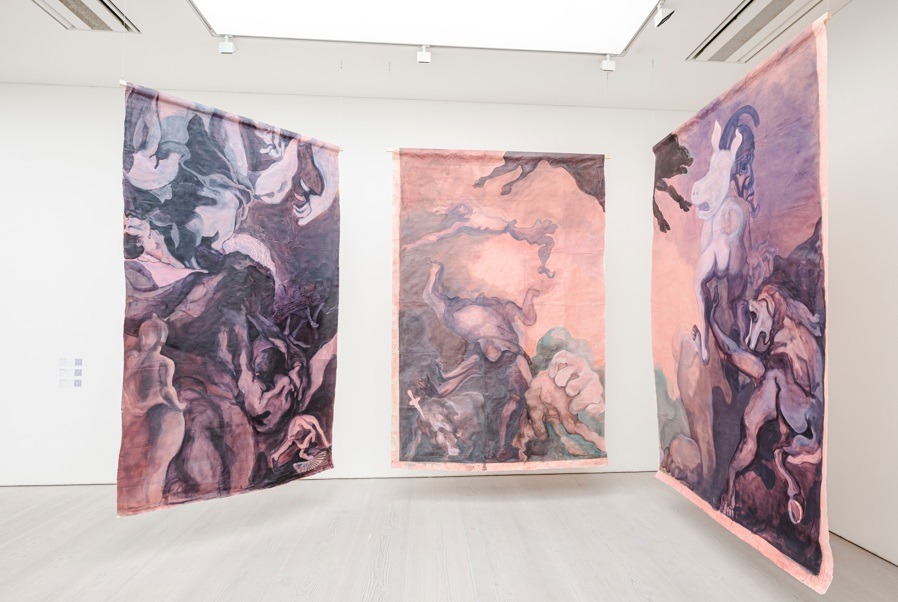Elizabeth Xi Bauer Gallery presents “The House of Bernarda Alba,” an immersive exhibition featuring the works of Elena Njoabuzia Onwochei-Garcia and Sam Llewellyn-Jones. United by themes of place, identity, and memory, Onwochei-Garcia’s figurative works delve into post-colonial narratives and identity politics, while Llewellyn-Jones explores the passage of time through landscapes and materials, capturing the history and memory embedded in natural and built environments.
Onwochei-Garcia, who was recently awarded the 2024 Artists’ Collecting Society Studio Prize, is exhibiting her works for the first time at the gallery. Known for her large-scale figurative paintings and intricate works on paper, Onwochei-Garcia draws from her Nigerian, German, and Spanish heritage to examine the intersections of race, identity, and history. Inspired by Mestiza theory, her work navigates the complexities of being between multiple cultural spheres. Onwochei-Garcia’s work is particularly concerned with the experience of the “Other” and the feeling of displacement.
Her triptych ¡Silencio! (2023), inspired by Federico García Lorca’s 1936 play La Casa de Bernarda Alba, forms a central part of the exhibition. The title of this work draws from the play’s first line, which captures the repressive atmosphere of a house where the protagonist, Bernarda, forces her daughters into isolation. Onwochei-Garcia reinterprets this in a modern socio-political context, reflecting on issues such as Brexit and the cultural implications of Britain’s withdrawal from the EU. Her suspended large-scale paintings evoke a sense of confinement, anxiety, and power dynamics, inviting the viewer to navigate the oppressive space.
Alongside this, Onwochei-Garcia presents Los Espectadores from her Dramas de Honor (2023) series. This work portrays figures hiding in darkness, waiting to witness a performance. It reflects the tension between those who act and those who govern, drawing on the formalized structures of 16th-century Spanish dramas. The artist uses traditional Japanese Washi paper to create sculptural works that respond to their environment, symbolising the fragility hidden beneath power structures.
Sam Llewellyn-Jones, known for his evocative landscape photography, is also showcasing new works that reflect the desert ecosystems of California. Llewellyn-Jones’s residency at Joshua Tree Highlands Artist Residency in 2024 inspired his exploration of rubbings, photography, and oil painting. His works seek to capture the evolving relationship between landscape, time, and memory. The artist uses analogue techniques and darkroom printing, combining them with oil painting to enhance the otherworldly qualities of the desert landscapes he captures.
Llewellyn-Jones’s mixed-media works, such as Hiraeth (2022), reflect the elemental and surreal qualities of desert terrains, using solarisation techniques and oil paintings over photographs to evoke an eerie, anthropogenic quality. The artist’s use of rubbings in oil pastel creates a direct physical connection to the landscape, preserving its textures and embodying the moment before time’s effects alter them.
Together, Onwochei-Garcia and Llewellyn-Jones create an exhibition that explores the emotional and physical landscapes of repression, identity, and time. “The House of Bernarda Alba” transforms the gallery into a space where memory, power, and landscape intertwine, creating a haunting and thought-provoking experience.



